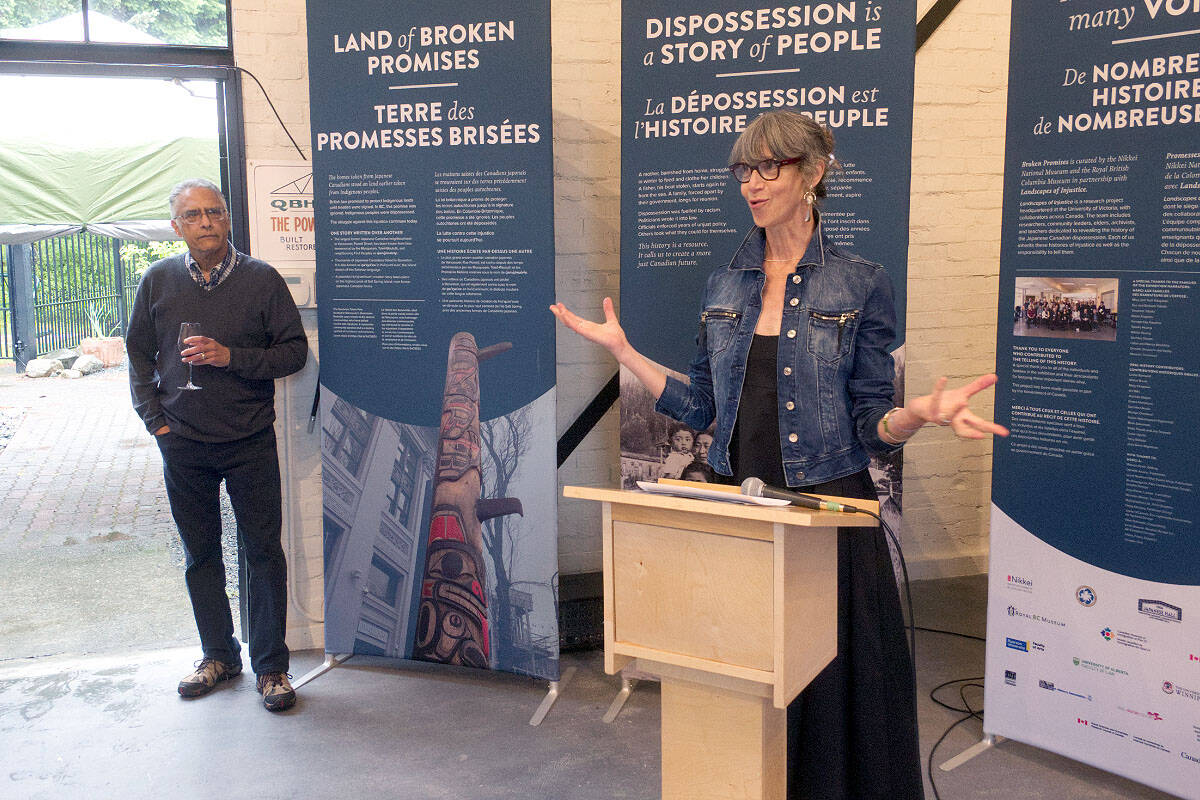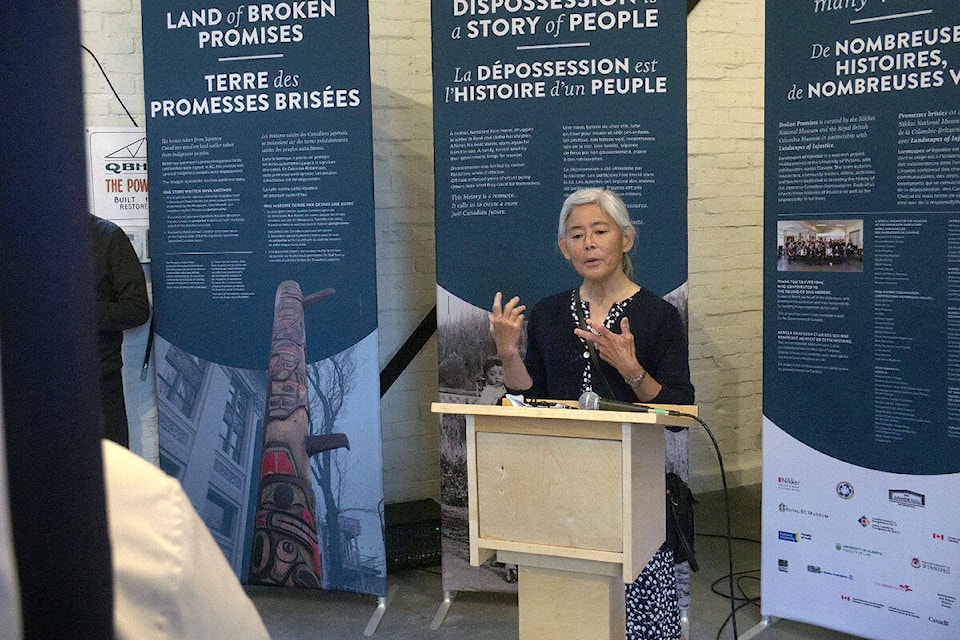A travelling national exhibit about a dark chapter of Canadian history is on display in a Vancouver Island museum.
‘Broken Promises’ explores the dispossession and internment of Japanese-Canadians during the Second World War. It was designed by the Nikkei National Museum and Cultural Centre and the University of Victoria’s Landscapes of Injustice research project, according to a news release by the museum.
Qualicum Beach Museum staff have contributed four panels detailing the experience of Japanese-Canadians living in the area at the time.
“The multiple panels here examine a dark time in Canadian history,” said Netanja Waddell, museum manager, during the exhibition’s launch on June 9.
“Through the stories of seven Japanese-Canadians, their life before the war, the administration of their lives during the internment and after the war ended, but also how legacies of how dispossession continue today.”
READ MORE: Qualicum Beach Museum receives $123,500 to restore heritage powerhouse
The bilingual exhibition examines when, in 1942, the Canadian government enacted the Defence of Canada Regulations to forcibly remove and relocate more than 22,000 Japanese-Canadians living on the B.C. coast.
They were first told by officials that their property and belongings would be kept safely, but they eventually discovered their properties were looted and land given away or sold, according to the Nikkei National Museum and Cultural Centre.
Qualicum Beach Museum staff interviewed Sachiko Okuda, daughter of Shima Umemoto and Hirosho Okuda — the latter’s voice is featured prominently in the local portion of ‘Broken Promises’.
Sachiko is a retired librarian and a literacy volunteer with newcomers to Canada. She spoke at the exhibit’s launch about the experience of collaborating with museum staff to tell her mother’s story.
“By her accounts, Qualicum Beach was this magical place,” said Sachiko, who travelled from Ottawa for the event. “There was the beach of course, but also the water was softer and the strawberries were juicier and you don’t don’t salt the roads in the winter which ruins your leather boots, as is the case back east. My mother spoke so longingly about Qualicum Beach that I wondered, why did she ever leave? But there was a lot that I didn’t know.”
Sachiko’s mother, Shima Umemoto, was born in Qualicum Beach in 1918 and lived in the area with her family in the 1920s and ’30s. Through emails and Zoom calls with Sachiko, museum staff learned more details about her mother’s life.
There was a lot Sachiko did not know about her mother, who lived a private life compared to her father, who was a community leader and advocate for the Japanese-Canadian community. When her mother passed in the 1980s, Sachiko found her registration card with photo ID, something all Japanese-Canadians over 16 were required to carry at the time.
It was thanks to Lorraine Bell, museum co-ordinator, that she discovered her mother’s 1929 class photo.
“My heart just leapt when I got to see what my mother looked like as a little girl so, thank you Lorraine.”
Museum staff also visited Fanny Bay and photographed the former site of the Deep Bay Logging Company, once owned by timber baron Eikichi Kagetsu.
At the time of dispossession, Kagetsu was one of the wealthiest Japanese-Canadians. His assets, estimated at approximately $8 million in today’s dollars, were taken by the government and eventually sold, according to the museum.
A Fanny Bay resident wrote to the museum in spring 2020 and said they were certain of the location of Kagetsu’s Deep Bay logging camp because for about six weeks countless plum trees burst into flower all around the intersection of Cougar Smith Rd and Hwy 19A.
The internment of Japanese-Canadians officially ended in 1949, but by this time tens of thousands of families were left with next to nothing.
‘Broken Promises’ will be on display until Sept. 7in the Qualicum Beach Museum’s (587 Beach Rd.) newly-renovated Powerhouse heritage building, originally constructed in 1924. Waddell hopes the facility will allow the museum to continue to attract travelling exhibits and serve as a community engagement space.
Like us on Facebook and follow us on Twitter.




